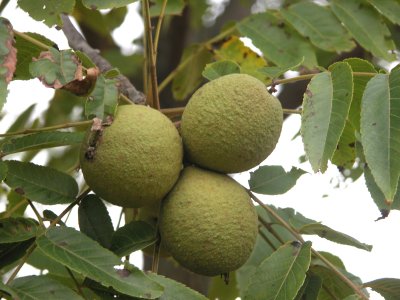
Black walnut trees, prized for their wood and nuts, can be a successful timber crop in southeast Nebraska, but growth depends on a variety of factors.
Dennis Adams, longtime forester with the Nebraska Forest Service, recently completed a report based on his decades-long study of black walnut trees. The report is titled "Growth of Black Walnut in Southeast Nebraska."
Black walnut is prized for its chocolate-brown, straight-grained wood which is used to make fine furniture, expensive gunstocks, and high-quality veneer products, the report notes. The nuts of the black walnut are relished as food by humans and animals. The nutmeats are low in sugar and saturated fats, high in polyunsaturated and monounsaturated fats, a good source of protein and fiber and contain no cholesterol.
Adams' report, co-authored by Benjamin Loseke, found that growth of black walnut trees depends on such factors as climate, site characteristics and silvicultural management regime. He found that average diameter growth of about 1/4 to 1/3 of an inch per year can be expected in southeast Nebraska.
"Before making a substantial investment in planting and/or managing black walnut trees for timber, one should investigate all available information concerning black walnut management in your area and consult with a local forester to develop a silvicultural management strategy that best fits your situation and expectations," the report said.
Adams long has been interested in black walnut timber production and growth. This led him to begin measuring the annual growth of individual black walnut trees in both selected plantations and native woodland sites in his southeast Nebraska forestry district. The number of years that measurements were recorded on each site ranged from 25 to 45 years.
No other known study in the Midwest has collected continuous growth data on black walnut trees over such a long period of time. Soil type, groundcover, tree stocking and other site conditions varied, as did management intensity. The results of this study will form the basis for locally accurate recommendations to landowners concerning planting and managing black walnut for timber in Nebraska and the surrounding region.
The NFS technical paper "Growth of Black Walnut in Southeast Nebraska" is available in hard copy upon request or on the website: nfs.unl.edu.
More details at: http://go.unl.edu/9xx4